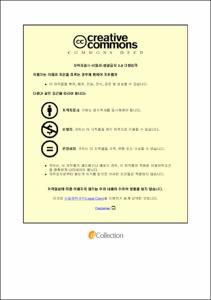원심분리기를 이용한 인도네시아 Palyja 정수장 슬러지의 탈수특성
- Abstract
- This study analyzed dewatering characteristics of sludge in the Palyja water treatment plant located in Pejompongan, Jakarta, Indonesia using the centrifugal separation which can minimize the installation area and the civil complaints caused by odor.
Polymer C-113PH, YCX-4(low cationic polymer), C-210PH, C-310PH(medium cationic polymer) and C-413PH(high cationic polymer) are frequently used in Korean water treatment plant. Plackett-Burman design was used to select the most effective in dewaterability and water content among 5 polymers. Experimental design and statistical analysis by Response Surface Methodology(RSM) were carried out by using selected polymers. The independent variables were set as polymer dose(mg/L), RPM and retention time(sec) and the dependent variables were set as water content(%), dewater rate(%) and turbidity (NTU). Capillary Suction Time(CST) was also used to analyze the correlation with the dewater rate and the optimum amount of polymer dose. Plackett-Burman design showed the most suitable polymer is C-310PH(medium cationic polymer) among the five polymers.
When the experiment was conducted using C-310PH, the water content of the sludge decreased and the dewater rate of the sludge increased in the order of RPM, polymer dose and the retention time. The response optimizer showed the optimum amount of polymer dose is 80~100 mg/L and the optimum mixing intensity is 800~1200 RPM to simultaneously satisfy the water content(65~75 %), dewater rate(75~ 85 %) and turbidity(50~100 NTU).
인도네시아의 수도 자카르타시는 740.28 킬로 평방미터 및 인구 12백만명의 도시로 성장하였으나, 1인당 평균가용 수자원량은 1,750m3에 그치는 상황이다. 하지만 용수의 수요량은 매년 크게 급증함으로 향후 심각한 물 부족현상을 겪게 될 것으로 예상된다. 현재 가동 중인 자카르타 시내 용수공급의 62.5%를 차지하는 Pejompongan에 위치한 일 처리량 172,800 ㎥ 규모의 Palyja 정수리장은 재래 방식으로 방류수의 슬러지 처리가 제대로 되지 않아, 하루 3,460 ㎥의 슬러지들이 인근 하천으로 방류되고 있는 상황이다. (BOD: 84.6 mg/L, COD: 1220 mg/L, Suspended Soilds: 41300 mg/L, TP: 8.24 mg/L, TN: 21.8 mg/L) (정수처리장 방류슬러지를 한국으로 가져와 KTR에 의뢰하여 나온 결과임.)
이를 개선하기 위해 자카르타시와 BPPT(인도네시아 과학기술청)에서는 정수슬러지를 처리하기 위한 기술들에 대한 시장타당성 Feasibility Study 를 계획 중인데, 이를 위해 정수슬러지의 탈수특성에 대한 분석이 필요하다. 현재 인도네시아에서 고려중인 탈수기술로 Belt Press 방식, Filter Press 방식, Centrifugal 방식이 있는데, Palyja 처리장에서 슬러지 처리시설로 사용 가능한 공간의 제약 (20m * 30m 면적)으로 인해 설치 면적을 최소화시킬 수 있고 악취로 인한 민원 발생이 적은 Centirfugal (원심분리) 방식을 사용한 탈수특성을 분석하였다.
정수장슬러지의 최적탈수를 위해서는 슬러지의 물리⋅화학적 특성 파악이 중요하며 슬러지의 탈수성은 슬러지의 PH와 입자의 전하, 결합수의 합량, 고형물 함량, 알칼리도, 입자의 기계적 강도, 공급율, 입자의 크기, 유기물 함량, 압력계수 및 슬러지의 종류 등 수많은 요소에 의한다(김은호 등, 1999).
현재 서울시 상하수도사업본부에는 6개소의 아리수정수센터가 있는데, 영등포아리수정수센터에서 슬러지 처리를 위해 사용 중인 SNF Korea의 제품을 선택하였고, SNF Korea에서 대표적으로 납품하는 5가지 제품 C-210PH, YCX-4, C-413PH, C-113PH, C-310PH 를 사용하였다(서울특별시 상하수도사업본부 홈페이지).
Plackett-Burman Design이란 각각의 요인들을 독립적으로 구분하여 해당 요인들이 결과값에 어떤 방식으로 영향을 미치는지 판단하기에 매우 적합적 방법으로 1946년 R. L., Plackett과 J. P., Burman 이 정리하였다(Plackett and Burman, 1946). 표면분석법은 독립변수와 반응변수 사이의 함수관계에 대한 통계적 모형을 가정하고, 독립변수의 조건에서 실험을 수행하여 얻어진 데이터를 회기 분석을 실시하여 실험독립변수를 결정할 수 있게 해주는 통계학적 기법이다(Lee. S. H., 2008).
본 논문에서는 5가지 응집제 중 탈수성과 함수율에 효과적인 응집제를 Plackett-Burman design으로 선정하고, 선정된 응집제를 표면분석법을 이용하여 응집제 투여량, 원심분리기 RPM, 원심분리기 가동 시간을 최적화하였다.
- Issued Date
- 2018
- Awarded Date
- 2018.2
- Type
- Dissertation
- Publisher
- 부경대학교
- Affiliation
- 부경대학교 대학원
- Department
- 대학원 U-EcoCity협동과정
- Advisor
- 이병헌
- Table Of Contents
- 제 1 장 서론 1
제 2 장 문헌연구 3
2.1 슬러지 정의 및 처리 3
2.1.1 슬러지 탈수기술 4
2.2 탈수이론 5
2.2.1 SRF(Specific Resistance to Filtration) 이론 5
2.2.2 CST(Capillary Suction Time) 이론 7
2.2.3 슬러지의 양 8
2.2.4 슬러지 탈수특성에 대한 평가 9
2.3 고분자 응집제 정의 및 반응방법 10
2.3.1 응집제 이온성에 따른 적용분야 12
2.3.2 분말형 응집제 (Powder type coagulant) 14
2.3.3 에멀젼형 응집제 (Emulsion type coagulant) 17
제 3 장 실험재료 및 방법 19
3.1 실험 재료 19
3.2 정수슬러지 원심분리 탈수를 위한 응집제 선정 실험 21
3.3 반응 최적화 도구 실험 23
3.4 모세관흡인시간 시험(CST) 25
제 4 장 결과 및 고찰 26
4.1 정수슬러지 원심분리 탈수를 위한 Polymer 선정 26
4.1.1 Plackett-Burman Design을 이용한 Polymer 선정 26
4.2 원심분리 탈수 실험을 통한 함수율 29
4.2.1 Polymer 주입량, RPM에 따른 함수율 29
4.2.2 Polymer 주입량, RT에 따른 함수율 33
4.2.3 반응표면분석에 의한 반응모델 추정 35
4.3 원심분리 탈수 실험을 통한 탈수율 37
4.3.1 Polymer 주입량, RPM에 따른 탈수율 37
4.3.2 RPM, RT에 따른 탈수율 40
4.3.3 Polymer 주입량, RT에 따른 탈수율 42
4.3.4 반응표면분석에 의한 반응모델 추정 42
4.4 Polymer 주입량, RPM, RT에 따른 탁도제거 46
4.5 원심분리 탈수 실험에 대한 운전인자의 주효과도 48
4.6 원심분리 탈수 실험 최적화 52
4.6.1 반응최적화 도구를 이용한 원심분리 탈수 실험 최적화 52
4.6.2 중첩 등고선도를 이용한 원심분리 탈수 실험 최적화 54
4.7 모세관흡인시간(CST) 시험 55
제 5 장 결론 61
참고문헌 63
- Degree
- Master
- Appears in Collections:
- 대학원 > U-EcoCity 협동과정
- Files in This Item:
-
-
Download
 원심분리기를 이용한 인도네시아 Palyja 정수장 슬러지의 탈수특성.pdf
기타 데이터 / 2.09 MB / Adobe PDF
원심분리기를 이용한 인도네시아 Palyja 정수장 슬러지의 탈수특성.pdf
기타 데이터 / 2.09 MB / Adobe PDF
-
Items in Repository are protected by copyright, with all rights reserved, unless otherwise indicated.